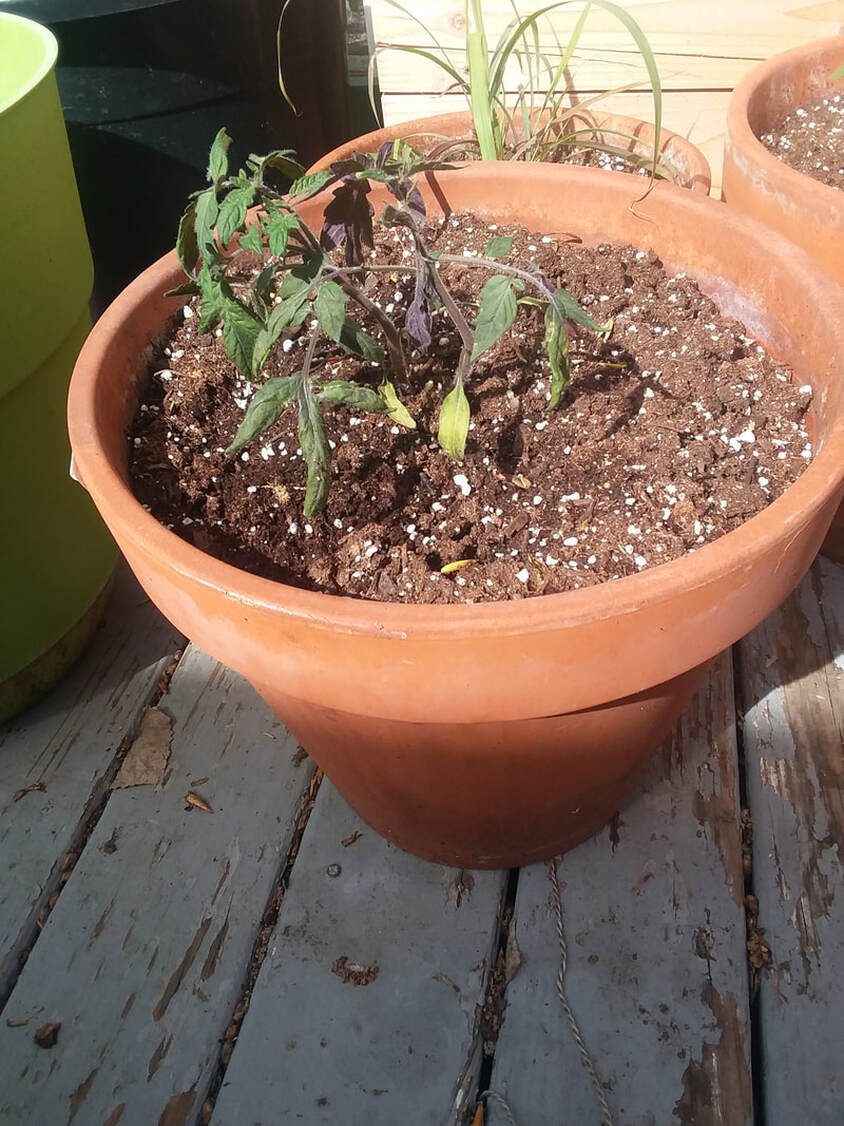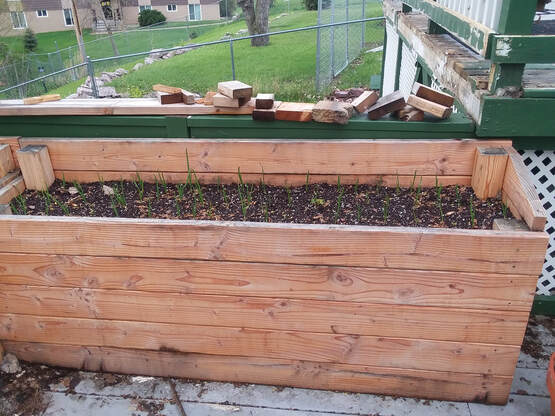|
Having a garden is not just for those who have large plots of land that they can till up and plant seeds in. Even someone with no more space than a deck can have a bountiful container garden that can produce just as much and in some cases more than a garden planted in plain old dirt. This is possible because you can tailor the soil medium for maximum growth and place the pots where they can get the perfect amount of heat and sunlight.
There are a few things to consider when establishing a container garden.

Containers
There are two basic categories of containers you can use for planting a garden on a deck. Pots Planter boxes. I seperate them out because pots come premade in many different styles, materials, sizes and can be moved once full. While planter boxes are typically built on site and are too large to easily move once they are full of soil. Pots You can get pots these days in many sizes and materials. They can range in price from cheap plastic to more expensive terracotta and ceramic. In my deck garden I mostly use terracotta pots for the following reasons,
Pot Size When it comes to container gardening for most plants bigger is always better. This is because the more soil or other growing medium you provide the better the plant will grow. I don't grow anything in a pot smaller than 12 inches now and most of my pots are actually bigger than that. Smaller pots can be quite successful for herbs but keep in mind that if you vary your pot size too much it can play hell with a watering timetable. Small pots on hot days in the sun can need water multiple times a day while larger pots suffice with one watering a day. If you are starting from scratch I would try to pick a once size pot to use so that you can better predict what you watering needs will be. If you want to vary from that once size go bigger since that will in most cases need less watering than the smaller one. So now that you have my take on what you need to know to start a container garden it is time for you to give it a try yourself. The options and ways to do it are endless so you need to figure out what works best for your situation. If you have any questions about this, send me an email and I will help you out as quickly as I can. For more information on how to start a container garden check out some of my other articles here on the Green Living Library. 
Planter Boxes
If you have the space and a good sunny location for them planter boxes are the way to go in my opinion. They will cost a bit of money and time to build and install but the benefits are worth it if you are serious about having a deck garden. Planter boxes are much better at holding water and providing larger spaces for plants to root into. This will result in stronger plants that need less frequent watering to establish and maintain good production. There are many shapes, styles and materials to build planter boxes out of treated/untreated lumber. Plastic panels, metal watering troughs, old fridges (seen it) pretty much anything you can think of using. I made mine from untreated lumber coated in many coats of raw linseed oil. What to plant You can plant anything you want in container gardens but there are things that will do better in a traditional garden. In my experience the following garden plants are good for pots,
You can further expand what you can plant by using vertical space as well with trellis for plants to grow on. This lets you expand further into the vining plants which in most cases are more productive than their bush type cousins. Watering You can go two ways with watering your container garden. You can water by hand every day or you can set up a timed irrigation system. Both systems have their pro’s and con’s. If you hand water it will most likely happen everyday even if it rains since rain typically can’t get enough water into the pots. It puts you out in your garden everyday which is great for monitoring plant growth and when it comes to harvesting but it does take time everyday. A timer controlled irrigation system is great for those of you with busy lives. It will water your plants automatically once it is set up and all you need to do is check it once a week to make sure it is still working right. This way has a lot more upfront cost and setup time but it is nice to be able to relegate watering duties to a timer. Sources https://lancaster.unl.edu/hort/articles/2002/typeofpots.shtml
0 Comments
Leave a Reply. |
AuthorHello my name is Josh Larson and I am the creator of the Green Living Library. Here on the blog you will find updates to content found in the Green Living Library as well as stories from those living the sustainable life already. Archives
December 2021
Categories
All
|